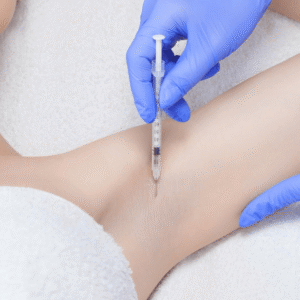Varicocele is a condition characterized by the abnormal enlargement of veins within the scrotum, similar to varicose veins that appear in the legs. It affects a significant number of men, often during their reproductive years, and can lead to discomfort, testicular shrinkage, and issues related to fertility. Varicocele Treatment in Abu Dhabi includes several permanent options to address this condition, ranging from traditional surgical procedures to more modern minimally invasive techniques. Understanding these options can help patients make informed decisions tailored to their specific needs.
What is Varicocele?
Before diving into treatment options, it is important to understand what varicocele is and why treatment might be necessary. The scrotum contains a network of veins called the pampiniform plexus, which helps regulate temperature in the testicles to maintain optimal sperm production. When these veins become enlarged or dilated due to faulty valves, blood flow can pool, causing varicocele.
Varicocele can be asymptomatic or cause symptoms such as a dull ache, discomfort, or visible swelling on the affected side of the scrotum. Additionally, varicocele is one of the most common correctable causes of male infertility, as it may impair sperm production and quality. Therefore, treatment may be recommended based on symptoms, fertility concerns, or testicular health.
Permanent Treatment Options Overview
Treatment for varicocele aims to interrupt the abnormal blood flow through the dilated veins, restoring normal circulation and alleviating symptoms or fertility issues. Permanent treatment implies that the chosen procedure provides long-term resolution rather than temporary relief.
The primary permanent treatment options available in Abu Dhabi include:
-
Open surgical varicocelectomy
-
Laparoscopic varicocelectomy
-
Microsurgical varicocelectomy
-
Percutaneous embolization (catheter-based procedure)
Each of these methods varies in invasiveness, technique, recovery time, and suitability depending on individual circumstances.
Open Surgical Varicocelectomy
Open surgery is the traditional approach to treating varicocele and has been used for decades. This procedure involves making an incision in the groin or lower abdomen to directly access the affected veins. The surgeon identifies and ligates (ties off) the enlarged veins to stop abnormal blood flow.
This approach is effective but more invasive compared to newer techniques. Because it requires a larger incision and more tissue dissection, the recovery period may be longer. However, open surgery remains a viable permanent treatment option, particularly when other methods are not available or suitable.
Laparoscopic Varicocelectomy
Laparoscopic varicocelectomy is a minimally invasive surgical procedure that has gained popularity due to its advantages over traditional open surgery. During this procedure, small incisions are made in the lower abdomen through which a tiny camera and specialized surgical instruments are inserted.
The surgeon uses the camera to visualize the veins and ligate the dilated vessels with precision. This technique offers several benefits including smaller scars, less postoperative discomfort, and faster recovery. It is especially advantageous for patients with bilateral varicoceles (on both sides) or those who have had recurrence following previous surgery.
In Abu Dhabi, laparoscopic surgery is widely performed in advanced healthcare centers, making it a commonly chosen permanent treatment for varicocele.
Microsurgical Varicocelectomy
Considered the gold standard treatment for varicocele, microsurgical varicocelectomy involves the use of an operating microscope to aid in the precise identification and ligation of the abnormal veins.
A small incision is made in the groin area, and under magnification, the surgeon carefully isolates the veins that need to be tied off while preserving the surrounding arteries and lymphatic vessels. This meticulous technique reduces the risk of complications such as testicular artery injury or lymphatic damage, which can lead to swelling.
Microsurgical varicocelectomy boasts high success rates with low recurrence and complication rates, making it a highly recommended permanent solution for varicocele. The technique allows for superior visualization of veins, including tiny collateral vessels that may be missed in other methods.
Percutaneous Embolization
In addition to surgical options, percutaneous embolization provides a minimally invasive, non-surgical approach to varicocele treatment. This procedure is performed by an interventional radiologist who accesses the abnormal veins through a small puncture in the groin or neck using a thin catheter.
Under imaging guidance, the catheter is navigated to the affected veins, and materials such as coils or sclerosing agents are released to block the dilated vessels. This blockage reroutes blood flow through healthy veins, effectively resolving the varicocele.
Embolization has the advantage of being performed under local anesthesia or light sedation and generally requires less recovery time compared to surgery. It is considered a permanent treatment because once the veins are blocked, they do not reopen.
While embolization avoids surgical incisions, it may not be suitable for all patients depending on the vein anatomy or presence of collateral circulation, so a thorough evaluation is essential.
Factors Influencing Treatment Choice
Choosing the most appropriate permanent treatment for varicocele in Abu Dhabi depends on multiple factors:
-
Severity and Grade of Varicocele: Larger or symptomatic varicoceles might be better treated with surgical approaches, while smaller ones may respond well to embolization.
-
Symptoms and Fertility Concerns: Treatment may be prioritized for those with pain or fertility issues, guiding the choice of method based on desired outcomes.
-
Patient’s General Health: Some patients may have medical conditions that favor less invasive options or require general anesthesia considerations.
-
Anatomy of Veins: Imaging studies such as Doppler ultrasound or venography help define venous anatomy, influencing suitability for embolization or surgery.
-
Previous Treatments: For recurrent varicocele, microsurgical or laparoscopic techniques are often preferred due to their superior visualization and ability to treat collateral veins.
-
Patient Preferences: Recovery time, invasiveness, and risk tolerance are also important in decision-making.
Abu Dhabi’s medical facilities provide comprehensive evaluations, including detailed imaging and consultations, to tailor treatment plans based on these factors.
Recovery and Follow-Up
Recovery time varies depending on the procedure. Generally, minimally invasive techniques such as laparoscopic and microsurgical varicocelectomy allow return to normal activities within one to two weeks. Percutaneous embolization may permit even quicker recovery, sometimes within a few days.
Post-treatment follow-up typically involves clinical assessments and imaging to confirm the success of the procedure and ensure the varicocele has resolved. In cases where fertility is a concern, repeat semen analyses are done to evaluate improvement.
Patients are usually advised to avoid heavy lifting and strenuous exercise during early recovery. With permanent treatments, the goal is to prevent recurrence and ensure long-term relief of symptoms or fertility improvements.
Frequently Asked Questions
Can varicocele recur after permanent treatment?
While all treatments carry some risk of recurrence, microsurgical varicocelectomy has the lowest recurrence rates due to precise vein identification. Recurrence may happen if collateral veins are missed or develop later.
How do I know which treatment is right for me?
A thorough evaluation by specialists is essential. Factors like vein anatomy, symptoms, fertility goals, and overall health will guide the choice between surgery and embolization.
Are these treatments available locally in Abu Dhabi?
Yes, Abu Dhabi has advanced medical centers equipped to provide all these permanent varicocele treatment options with experienced specialists in urology and interventional radiology.
Will treatment improve fertility?
Many men see improvements in sperm quality and fertility following successful varicocele treatment. However, outcomes vary and depend on other factors influencing fertility.
Conclusion
For residents of Abu Dhabi dealing with varicocele, permanent treatment options are widely available and range from traditional open surgery to advanced minimally invasive and radiologic techniques. Open surgery, laparoscopic surgery, microsurgical varicocelectomy, and percutaneous embolization each have unique advantages and considerations.
Choosing the right treatment depends on multiple patient-specific factors and should involve a comprehensive evaluation by healthcare specialists. Permanent treatments aim to provide long-lasting relief from symptoms, improve fertility potential, and prevent recurrence.
With the availability of modern techniques and expert care in Abu Dhabi, patients have access to effective and durable solutions for varicocele management that prioritize safety, comfort, and quality of life.




